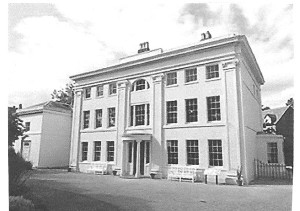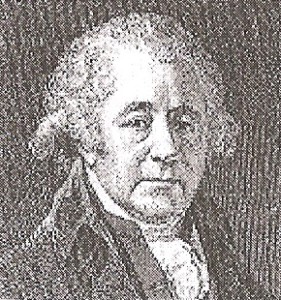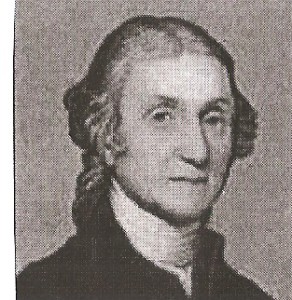
A meeting of inventors, scientists and natural philosophers – such was the purpose of the Lunar Circle, as it was known when it was started in 1765, changing its name to the Lunar Society of Birmingham ten years later. Like the better-known Royal Society, the group comprised individuals from industry and science, but what made it special was that all the members were interested in the application of science to such disciplines as education, manufacturing, medicine, mining and transportation.
Meetings of the society took place in members’ homes including Soho House in Birmingham and in Lichfield see above. They were scheduled at the time of the full moon because travelling at night, when no street lighting existed, could be dangerous and many of the members had to travel a long way to get to the meetings. Members even referred to themselves as the ‘lunatics’ (at the time called lunaticks). The image above is of Soho House the home of Matthew Boulton and is open to the public. A portrait of Matthew Boulton is shown below.
Lunatics
Membership of the Society was relatively small, around 12 to 14 at any one time, and represented some of the leading scientists and innovators of the time. The core group of the ‘lunatics/lunaticks’ was made up of names to conjure with: Matthew Boulton shown opposite, who created one of the first factories, James Watt of the steam engine fame, Joseph Priestley who first isolated oxygen, scientist and industrialist Josiah Wedgewood and Erasmus Darwin, whose ideas on evolution anticipated those of his more famous son.
Matthew Boulton
A portrait of Joseph Priestley is shown opposite.
Others included Samuel Galton Junior, James Keir, William Murdock, John Whitehurst and William Withering. In addition the Society corresponded with and received visits from a succession of eminent individuals, among them Richard Arkwright, Benjamin Franklin, Thomas Jefferson and Anna Seward. (More detail on the core membership given below). The Society was particularly interested in chemistry and its industrial application but discussions ranged widely across many aspects of the emerging manufactured products and scientific techniques arising from the Industrial Revolution. Particular specialism’s represented by the Society included ceramics, education, electrical technologies, engineering, geology, manufacturing technologies, mining, medical science and transportation systems, particularly canals. Unlike the later philosophical and literacy societies which followed in its footsteps, the Lunar Society did not directly engage in discussions on politics or religion although they did discuss social, political and economic issues. One of the issues that did discuss were the evils of slavery which many members abhorred and lobbied for its abolition.
The Society was formally wound up in 1813. The remaining members (Keir, Watt, Edgeworth and Galton), staged a lottery to allocate the library books and Samuel Galton won.
The Lunar Society may not have been the only group of its kind – others existed in other parts of the country – but it was certainly one of the most remarkable and influential gathering of polymaths of any time. Individually and through the Society, its members contributed greatly to the development of industrial processes and technical education. A present – day Lunar Society exists and aims, like its illustrious eighteenth-century predecessor, to play a leading part in the development of Birmingham and the wider region.
Membership in more detail:
Matthew Boulton, Exploited the potential of James Watt’s condensing and rotary steam engines, very successful business man and much more.
Erasmus Darwin. Grandfather of Charles Darwin, a medical doctor who also researched topics in botany and anticipated many of Charles ideas associated with evolution.
Thomas Day. Educational thinker and reformer.
Richard Lovell Edgeworth. Educational reformer and pioneer in the application of electricity e.g. telegraphy. Invented and improved machinery for agricultural industries. Wrote a book Practical Education
Samuel Galton. Gun maker.
Robert Augustus Johnson. Chemist.
James Keir. Industrial chemist particularly in the manufacture of glass and soap.
John Levett.
Joseph Priestley. An extraordinary amateur scientist discovered oxygen, invented carbonated water and many more other discoveries.
William Murdock. Inventor including gas lighting – first used domestically in Redruth, Cornwall.
William Small. Medical doctor with a very wide set of interests including chemistry, engineering, mathematics (taught the young Thomas Jefferson) and metallurgy.
John Smeaton.
Jonathon Stokes. Botanist.
James Watt. Inventor of the condensing and rotary steam engines along with a wide range of other industrial processes e.g. copying, scientific instrumentation design and manufacture and even canal surveying.
Josiah Wedgewood. Very famous ceramist, active advocate for the development of canals
John Whitehurst. Horologist and pioneering geologist particularly interested in how the earth was created.
William Withering. Medical doctor also a noted botanist and major interest in chemistry and metallurgy.
Corresponding members included Benjamin Franklin and the famous civil engineer John Smeaton.
A truly remarkable group of individuals!
Reference:
Uglow. J. ‘The Lunar Men: the friends who made the future’. Faber and Faber. 2002.
Also see biography on this website ‘Great Engineers and Pioneers’ many of whom were members of the Lunar Society.



Recent Comments